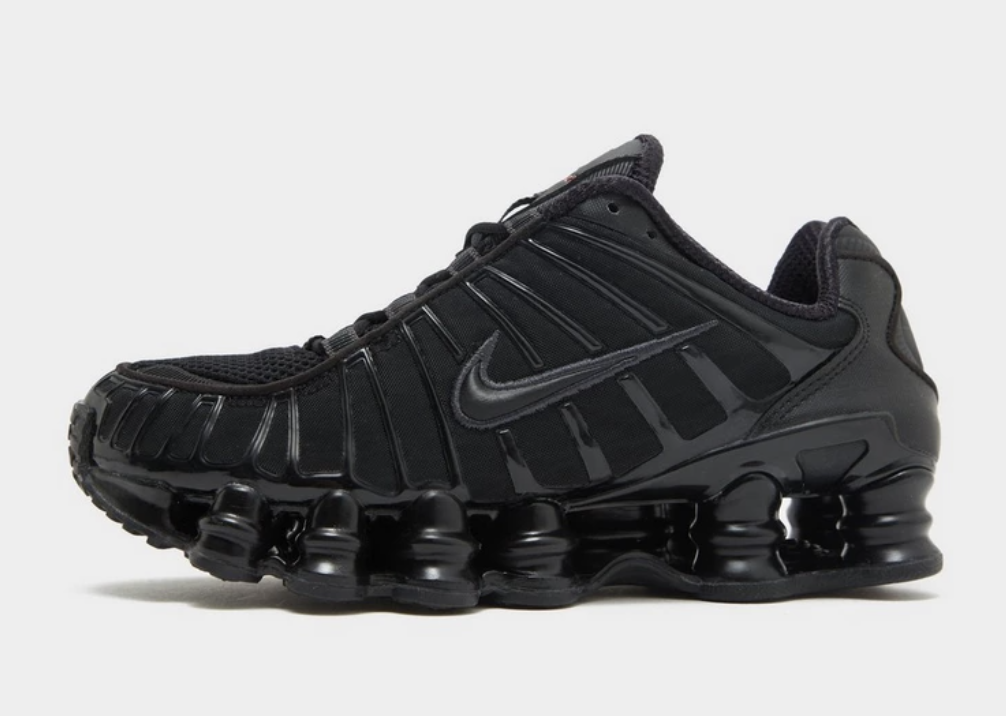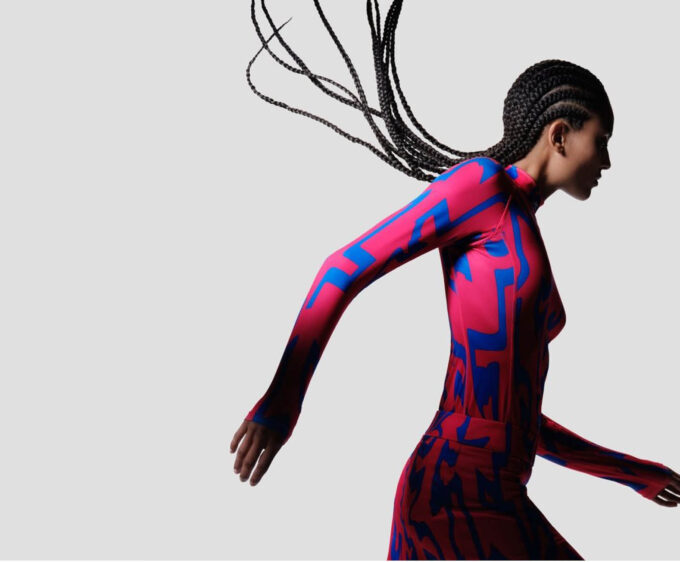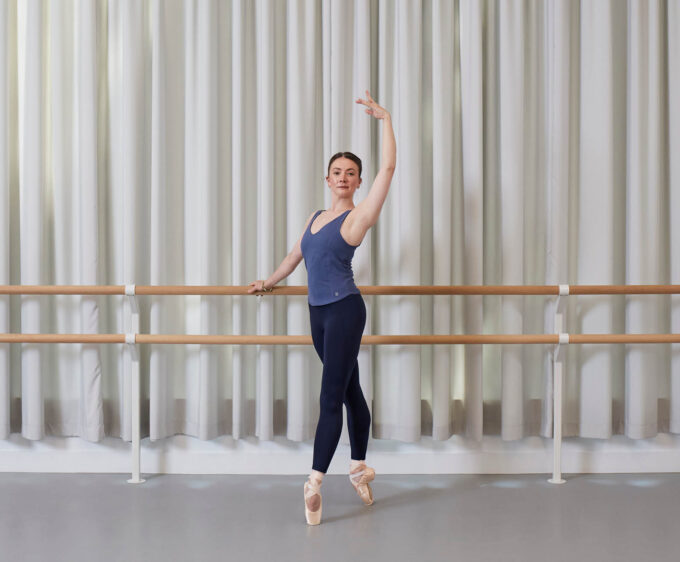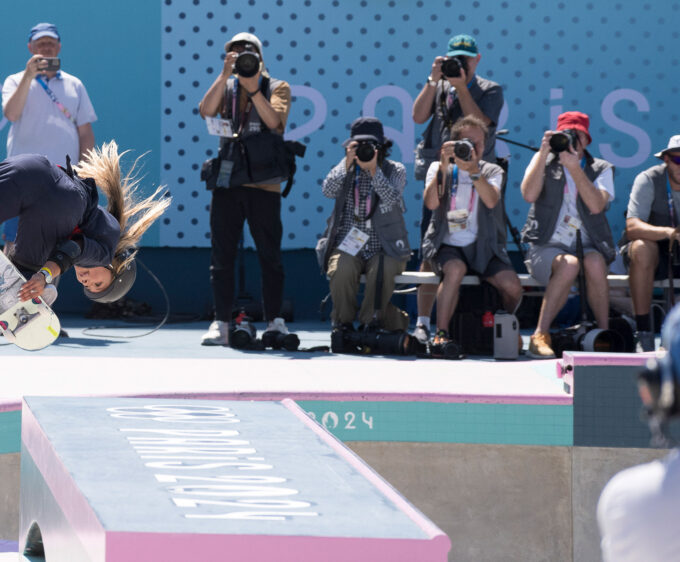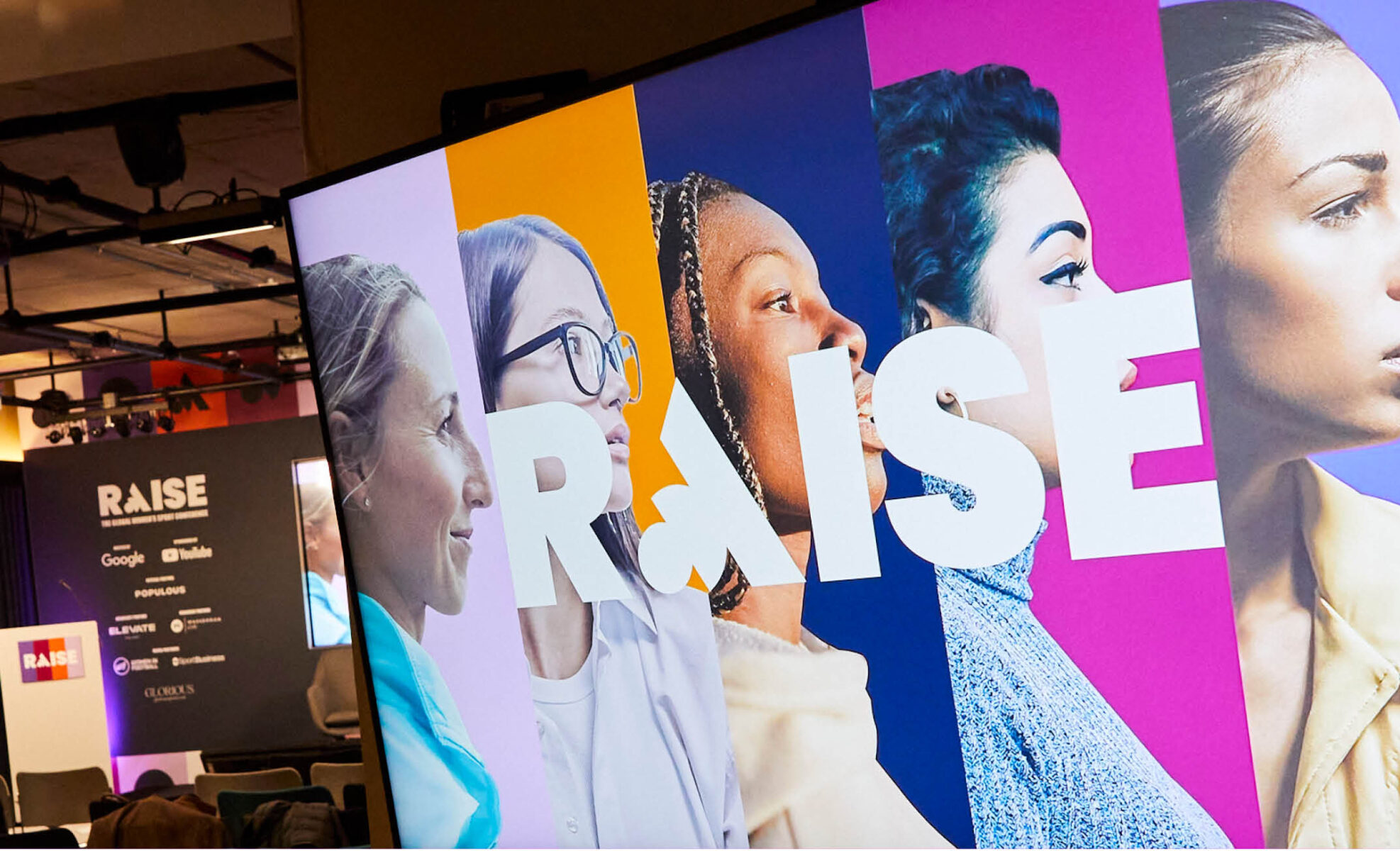
Are We There Yet?
What happens when you fill a room with industry leaders from the world of women’s sports? We headed to Google HQ for the RAISE Women’s Sport Conference to dive into the exciting progress being made and tackle the real challenges ahead, driving lasting change for women’s sports.
By Ellë Bolland
Photography by Stacey Osborne
What do female athletes and Roger Bannister, the first person to run the four-minute mile, have in common? They made the impossible possible. In 1955, just one year after Bannister ran the record of 3:59.4, twenty-four people then ran a sub-4 mile. Twelve years later, even more records were broken, with Kathrine Switzer becoming the first woman to run the Boston Marathon. The difference with Bannister’s record? Other women had already ran the marathon distance, but not with an official race number because women were “physiologically incapable of running 26.2 miles” – not to mention the impact running such distances had on a woman’s fertility – God forbid she’d choose running over having a family!
Despite Switzer’s success, it took another four years for the Amateur Athletic Union to lift the official ban on women competing in marathons 1971 (read Kathrine’s Glorious story here). The following year, the New York Marathon allowed women to take part for the first time, with just six women competing that day. Today, women and men are continuing to take the marathon to new heights, with over 800,000 people – a record-breaking number of entries to any marathon – applying for the London Marathon 2025 ballot, and a hopeful 49.03% of these from women. It’s remarkable that today we’ve made such progress in a short space of time. Or is it?
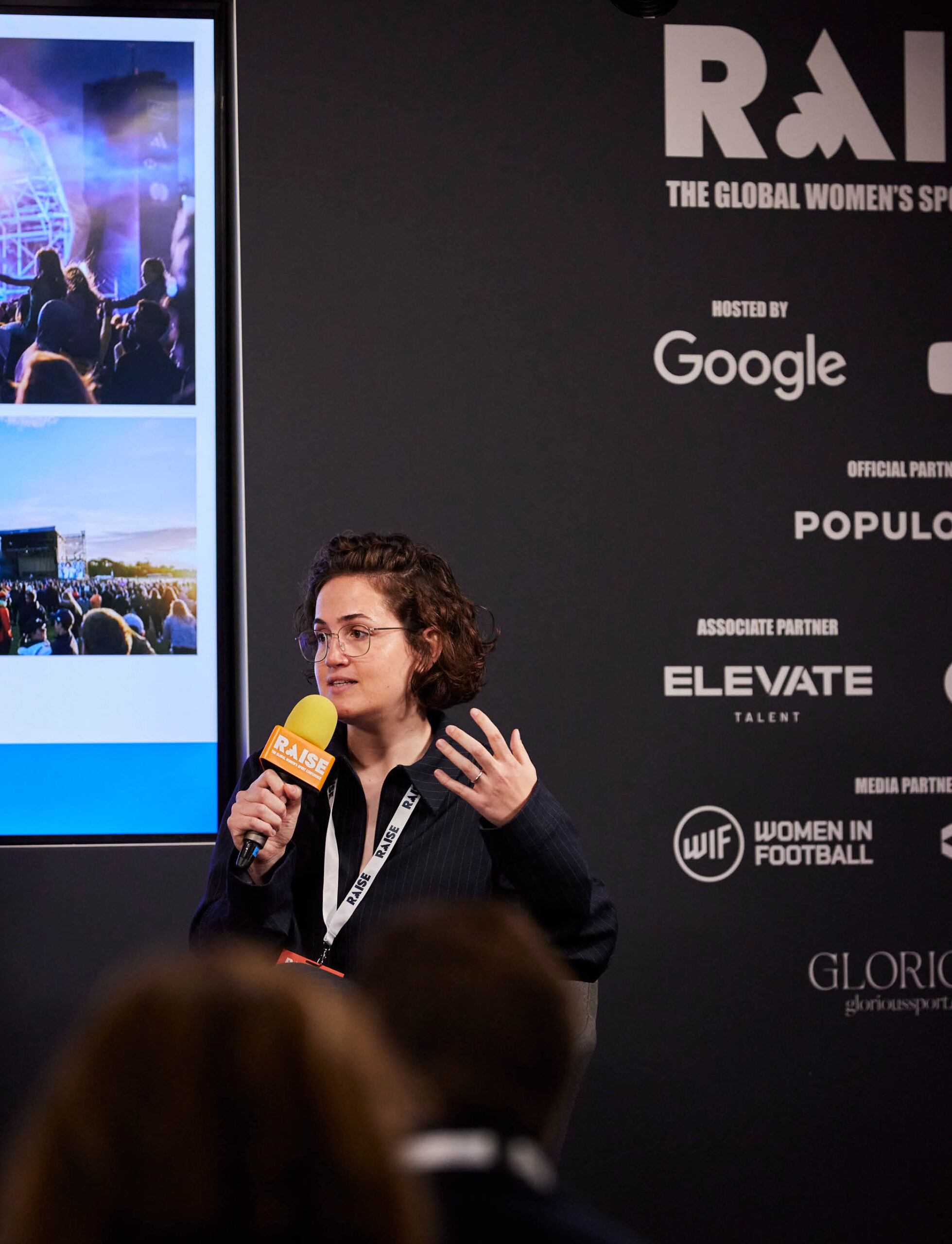
I’m writing this from Google Headquarters in London’s King’s Cross St Pancras—an unusual setting for a sports writer, to say the least. I’m here for RAISE, the Global Women’s Sport Conference, and we at Glorious are honoured to serve as a content partner for this event. It’s surreal to see our logo alongside industry giants like YouTube, Google, and Wasserman Live. This gathering features a diverse array of industry leaders, and when I say leaders, I truly mean it. The room is filled with change-makers—individuals who don’t just talk the talk but actively drive real change. Among them are the CEO of WTA Ventures, the Executive VP and CEO Europe of VISA, the CEO of Charlotte Tilbury, the Chief Commercial Officer of Arsenal FC, and the Vice President of the Saudi Boxing Federation, along with professional athletes—the list goes on.
This invite-only conference promises a unique forum for in-depth, practical discussions led by high-profile, passionate individuals who are the decision-makers poised to make a significant impact. While the term “conference” might conjure up images of formalities, with men in suits and corporate schmoozing over “synergies,” my experience at the welcome drinks revealed something distinctly different. The atmosphere is vibrant, filled with women and men from diverse backgrounds, all gathered to discuss the progress we’ve made in women’s sport and how we will continue to change the game.
innovative
One of my first conversations was with a partner at Populous, the global architectural design firm renowned for innovative projects like the new state-of-the-art Inter Milan stadium and The Sphere in Las Vegas. Initially, I questioned the connection between architecture and women’s sport, but it quickly became clear how crucial it is to create inclusive spaces. Take Tottenham Hotspur Stadium, another of their acclaimed projects. On a Saturday afternoon, it must accommodate 63,000 predominantly male football fans, then seamlessly transform to welcome another 63,000—mostly female—fans later in the week for events like a Beyoncé concert. The space needs to serve everyone, with every detail considered, from toilets and queueing systems to merchandise stands and drink offerings.
Associate Principal Ari Lorenzana was at RAISE to discuss the firm’s work with the AIG Women’s Open. Golf tournaments often face similar challenges to these stadiums, being traditionally dominated by men and frequently lacking family-friendly features. While a typical golf tournament might offer picturesque surroundings and a few food tents, the experience can feel functional and miss out on fun and relaxed elements for the whole family. Ari explained how the Populous team reimagined the AIG Women’s Open by expanding off-course entertainment and food offerings to attract a more diverse fanbase and boost attendance among younger women. Picture festival vibes—bean bags and deck chairs, movie screenings, putting challenges, immersive VR experiences for the whole family, and even performances from artists like Tom Grennan. The result? The highest number of attendees at a women’s event to date.
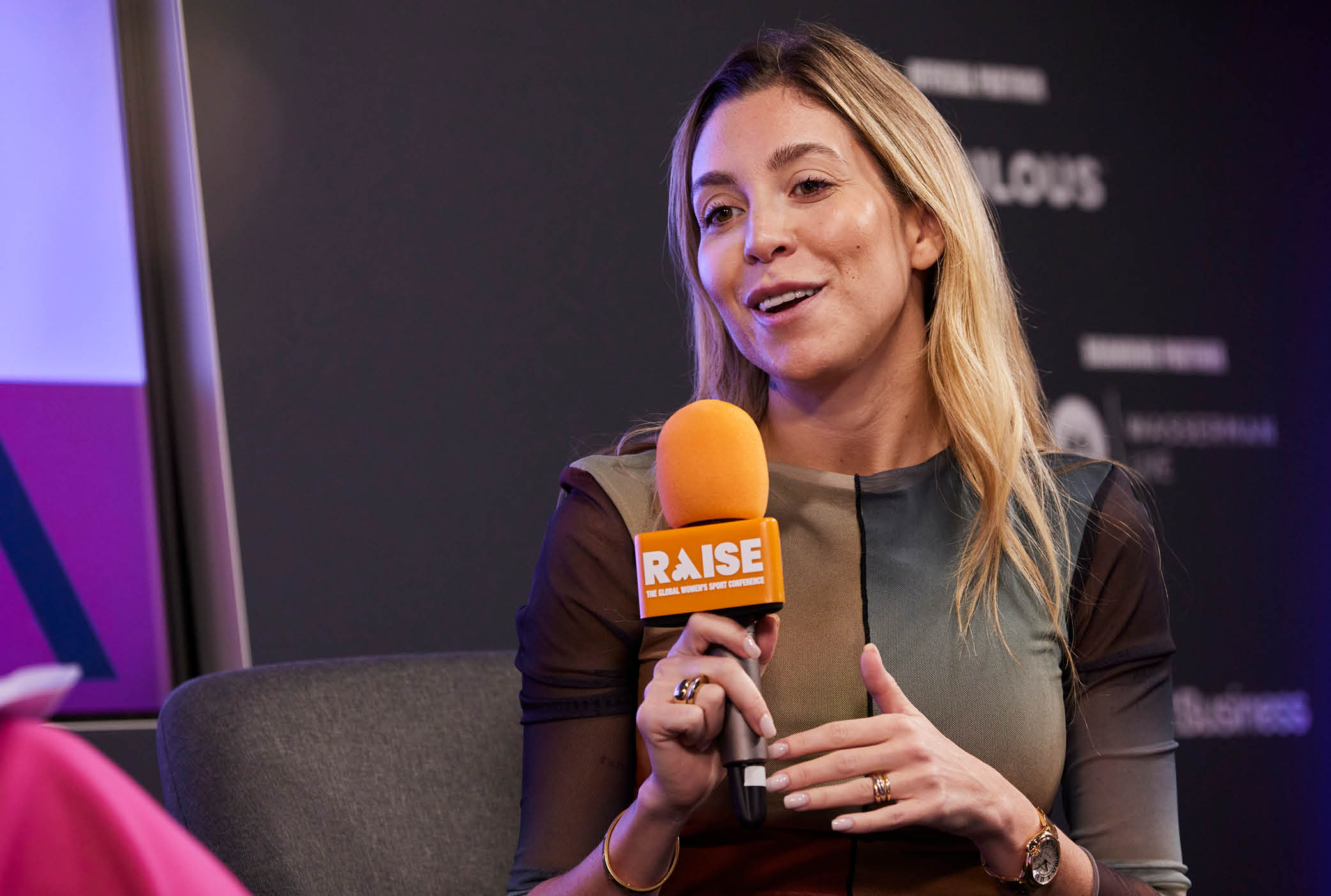
As we take our seats for presentations from business leaders across various sectors in women’s sport, we are warmly greeted by Sally Corander, founder of RAISE, along with our Google hosts, Matt Brittin, President of Google EMEA, and Kate Johnson, Global Marketing Director for Sports, Entertainment, and Content Partnerships at Google.
In one of the first discussions, Victoire H. Cogevina Reynal, Co-CEO of Mercury 13—the new investment firm focused on acquiring and owning multiple professional women’s football clubs across Europe and Latin America—sits down with Kirsten Sibbit-Johnston, the Director of Strategy, Growth, and Transformation at The Sports Consultancy, to discuss her latest venture. Founded in 2023 by Victoire and sports entrepreneur Mario Malavé, Mercury 13 aims to invest $100 million in women’s football, unlocking the true potential of these clubs and elevating the women’s game. Their goal? To rip up the blueprint of football club ownership. “In the last decade, there’s been a copy-and-paste approach to women’s football. Now we have this incredible opportunity to rethink what the product is and how we sell it to a new audience, creating a new fandom,” she shares.
Victoire’s words echo those of Ari Lorenzana of Populous: women have different interests and care about different things, which must be catered to. Discussing Mercury 13’s recent acquisition of F.C. Como Women (read more about them in this Glorious story), Victoire highlights the club’s luxury-oriented audience, emphasising their marketing strategy targets women who care about fashion and ambition without compromising their femininity. Meanwhile, the group aims to acquire other clubs, branding them with distinct personalities and expertly understanding their fandom, tailoring their marketing and engagement strategies accordingly. They are currently focused on adding a new club to their portfolio that will appeal to a more rebellious, younger Gen Z audience.
As I delve into the discussions, it becomes increasingly clear that boosting the visibility of women’s sport is essential for driving revenue. Jo Osborne, the former Executive Producer and now Head of Women’s Sport at Sky Sports, makes this point crystal clear when she shares some eye-opening statistics: a staggering 9.3 million viewers tuned into Sky’s women’s sports programming in 2023, representing a 7% increase from the previous year. It’s a remarkable sign of progress.
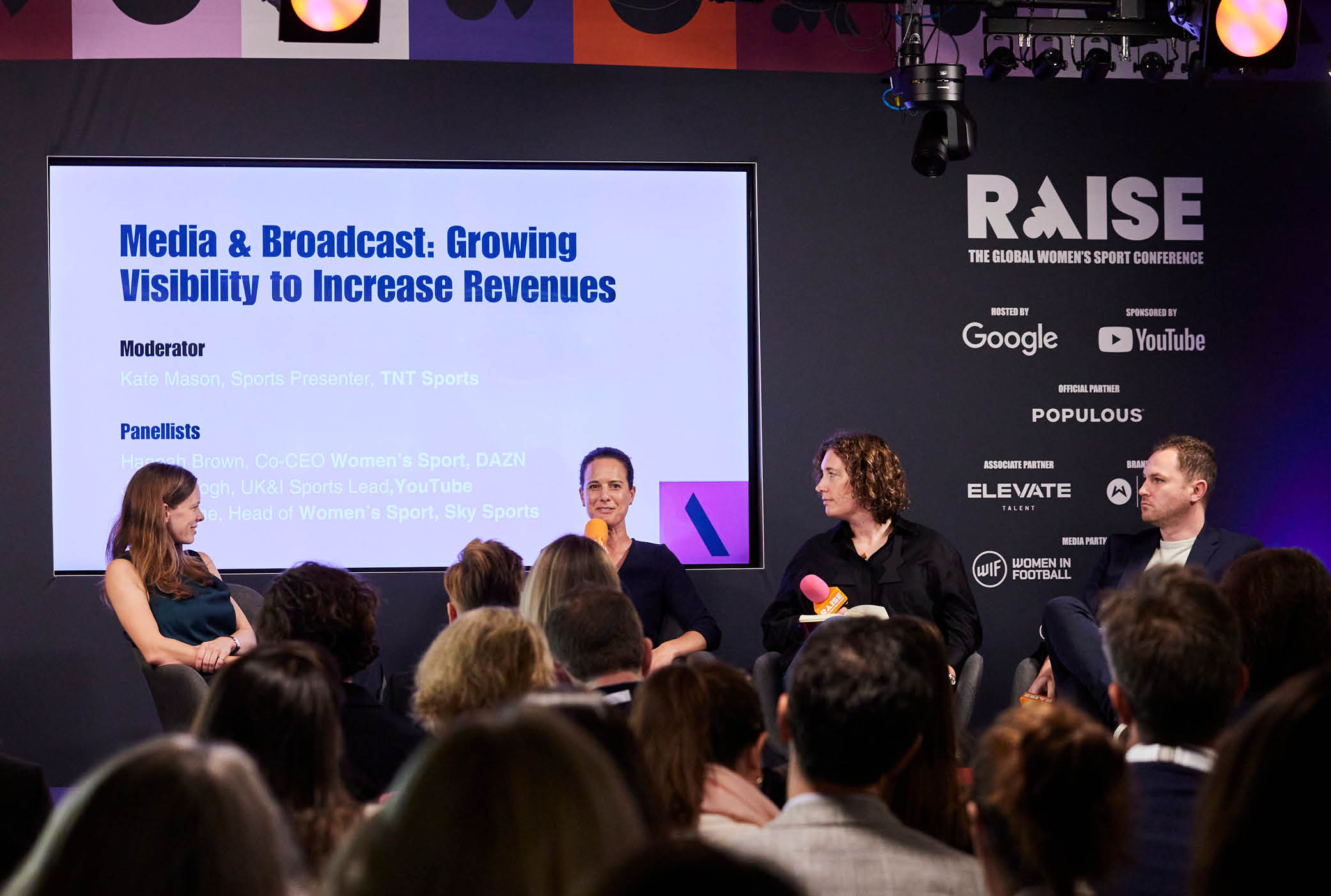
effective
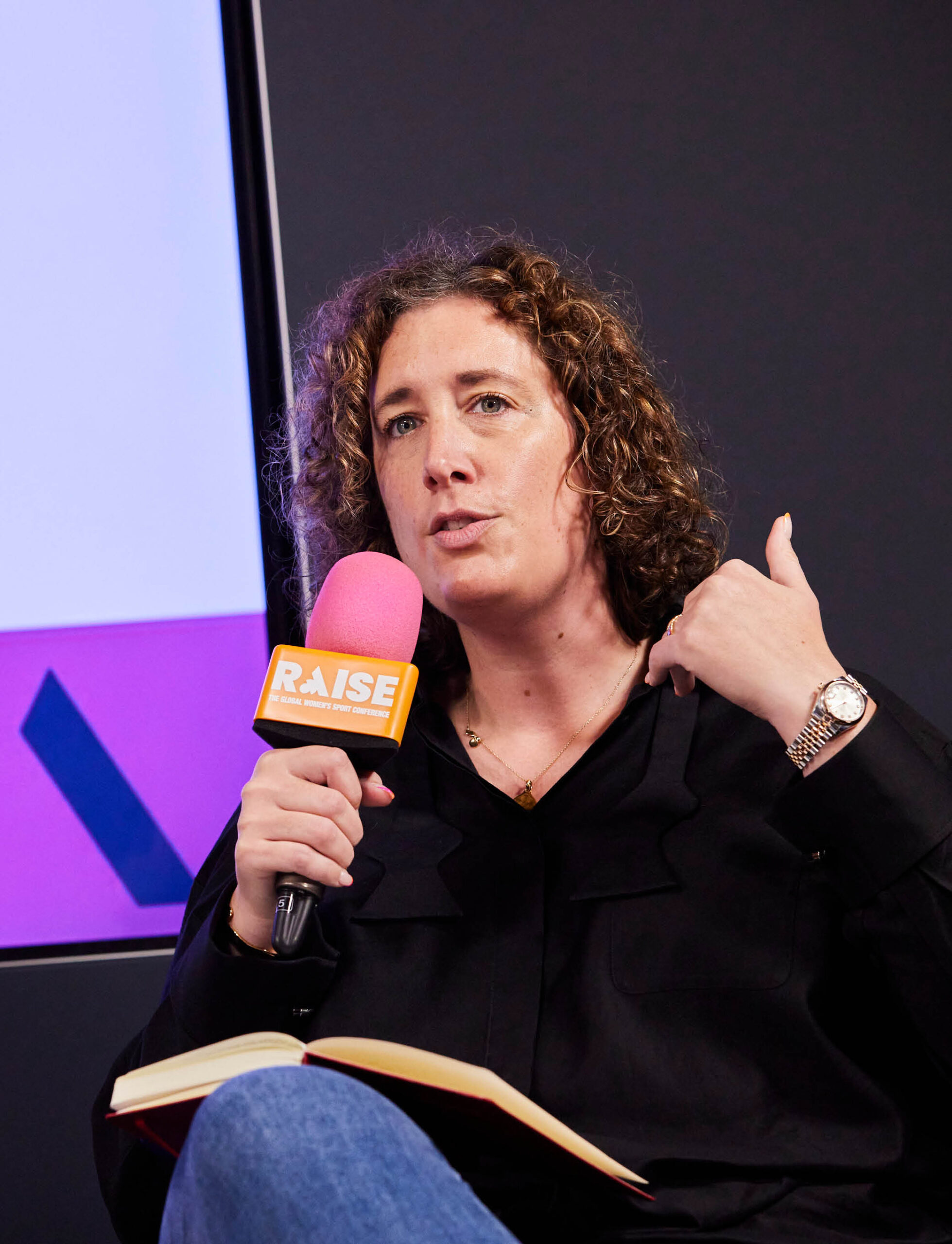
A pie chart flashes on the screen beside her, visually breaking down the audience demographics. I can’t help but notice the distinct segments: men who exclusively watch men’s sports, women who focus solely on women’s sports, and a sizeable middle group of men and women who are either converting to women’s sports or discovering them for the first time. It sounds obvious, but this really drives home the point that when you invest in production quality and effective marketing, more people are inclined to engage with women’s sports.
Jo reflects on her journey at Sky, reminiscing about her early days 30 years ago when there was minimal investment in women’s sports. “It was a different world back then,” she laughs, but now, with sustained long-term investment, they are witnessing genuine shifts in audience growth across a variety of women’s sports.
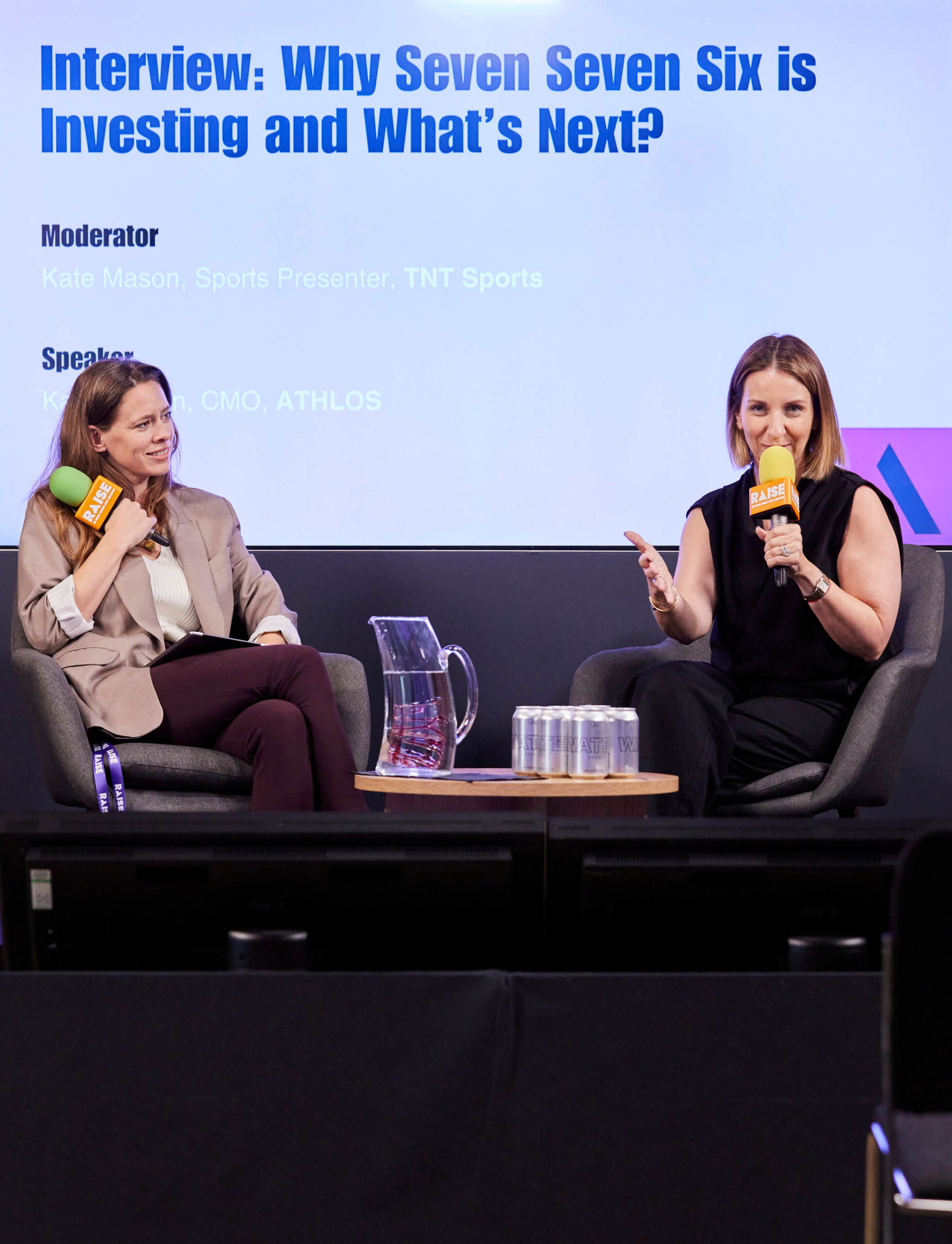
Beyond traditional broadcasting, we find ourselves in an exciting era where sports consumption is evolving. Some fans prefer the thrill of watching games on large screens, while others are glued to their phones or catching highlights whenever they can. Jonny Keogh, UK&I Sports Lead at YouTube, highlights this shift by revealing an astonishing statistic: audiences have watched a jaw-dropping 35 billion hours of sports content over the past twelve years. Yes, 35 BILLION, billion with a B! It’s hard to even fathom how many football matches that translates to.
This surge in viewership is largely attributed to the rise of YouTube on TV. The platform has partnered with major brands like Sony, Samsung, and Sky, making it easier than ever for fans to live-stream sports right from various devices. The numbers speak for themselves—a 45% increase year on year. While traditional TV and long-form content continue to grow, short-form content is also gaining traction. It’s essential for platforms like YouTube to offer tools and formats that cater to diverse audiences.
Take YouTube Shorts, for example. It’s currently racking up an impressive 17 billion views a day (yes, a day!) from 2 billion logged-in users. Rob shares an insight: “Look at the Barclays Women’s Super League; it hasn’t even kicked off yet, and it’s already gained 30,000 subscribers. And the DAZN women’s football channel has already surpassed 1 million subscribers.” Seated next to him, DAZN’s Co-CEO, Hannah Brown, expands on his point, explaining that their YouTube strategy has been instrumental in uncovering new audience insights. Often, viewers’ first point of entry is YouTube, allowing the brand to understand how they are discovering women’s sports and how their viewing habits differ.
The key takeaway from this panel? The winds of change are blowing; the appetite for women’s sports is unmistakable, and platforms like YouTube are empowering brands to gather vital data and insights to effectively cater to these new audiences. This emphasis on accessibility and engagement is echoed in the work of emerging brands like Athlos, the revolutionary women-only track meet created by Alexis Ohanian (co-founder of Reddit, investor in Angel City, and husband to Serena Williams). Athlos was live-streamed from New York’s iconic Icahn Stadium last week, allowing everyone to watch without barriers to entry. A staggering 2.5 million people tuned in on Twitter (or X – apologies, Elon!), demonstrating the market for track and field is very much there.
This real-time example highlights how events like Athlos tap into the same accessibility that YouTube offers. Kayla Green, Athlos’ dynamic CMO, takes to the RAISE stage to share the brand’s ambitious vision of blending world-class competition with entertainment. Athlos brought together top female athletes to compete for a record $500,000 prize pool, with $60,000 awarded to each winner across their six disciplines: 100m, 200m, 400m, 800m, 1500m, and 100m hurdles. Winners were even crowned with custom Tiffany & Co. tiaras, adding a touch of luxury to this groundbreaking event. With Megan Thee Stallion energising the crowd, the spectacle was truly unforgettable.
Athlos isn’t just about raising prize money (though doubling the Diamond League’s payout is certainly impressive); it’s about cultivating an entirely new fandom by making the event widely accessible. Athlos is attracting more women into athletics and showing that the sport can be just as exciting for newcomers as it is for seasoned fans. This signals a future where women’s sports won’t merely compete for attention—they will lead the way in blending entertainment and competition, setting a new standard for engaging audiences and hopefully serving as a catalyst to transform women’s athletics.
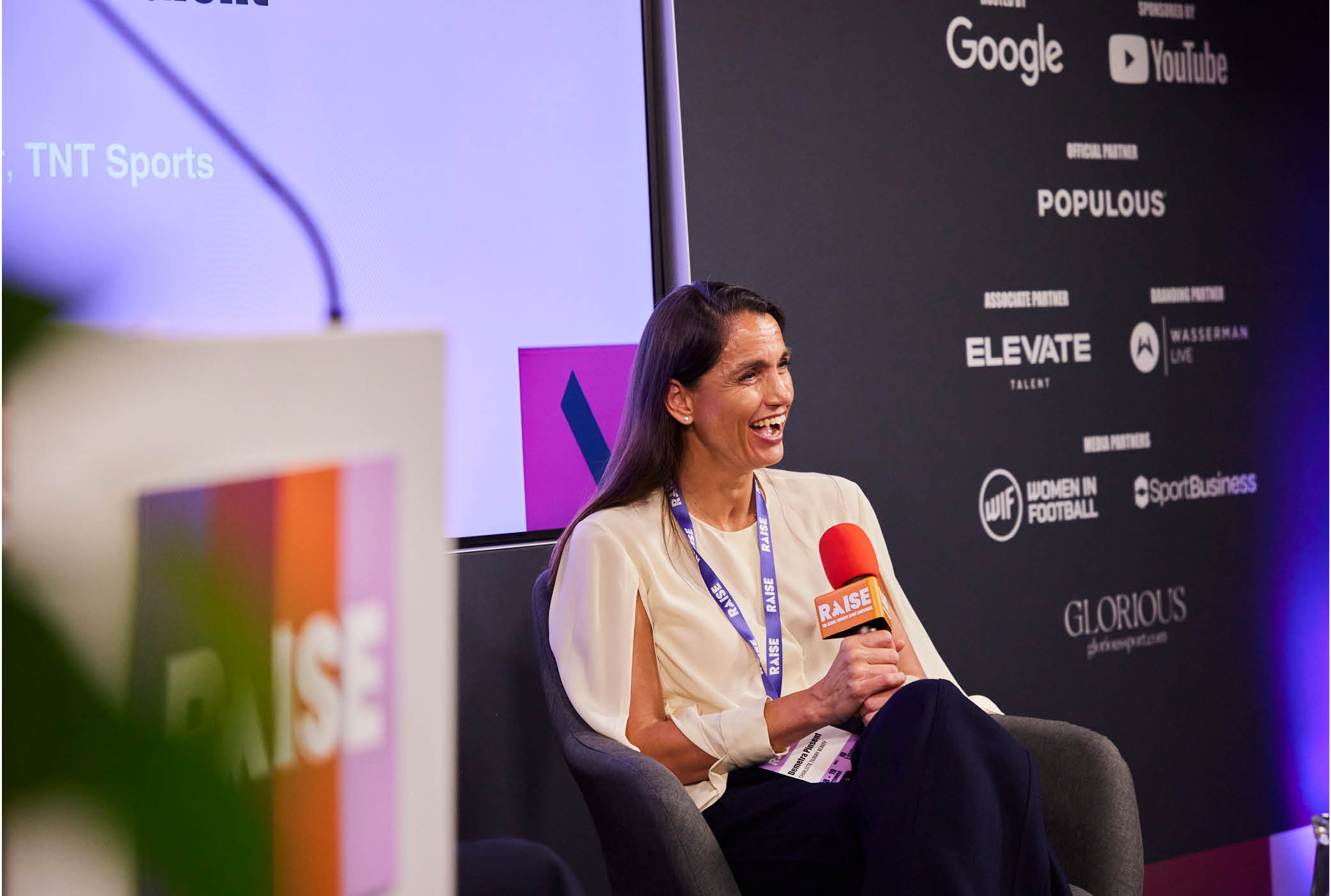
During lunch, I meet Louise Kingsley, Director of Performance at British Rowing (and directing performance, she certainly is—British rowing is currently enjoying remarkable success, as shown by their impressive medal haul at the Paris 2024 Olympics!). I also chat with Penny Snowdon, founder of Active Leaders, a programme designed to empower young people through leadership and activity. This initiative focuses on providing fun, friendship, and valuable experiences while helping participants develop skills in leadership, event management, and marketing. It fills a vital gap in holiday programmes that often cater to younger children, enabling young people to gain confidence and resilience through engaging activities. Be sure to check them out—they’re doing fantastic work!
As everyone takes their seats, our main presenter, the fabulous Kate Mason, introduces the next panellist. We probably should have mentioned Kate earlier; a seasoned journalist and TV presenter for TNT Sports, Eurosport, and UCI MTB, she excels at drawing out the best insights from her guests. Kate will be sitting down with Charlotte Tilbury CEO Demetra Pinsent to discuss how the brand is making history in motorsports.
When considering unexpected partnerships, Charlotte Tilbury’s collaboration with F1 Academy immediately comes to mind. However, as I listen to Demetra, it becomes clear that this partnership makes perfect sense. “Brands play a pivotal role in demonstrating the media value of women’s sport. We choose where to invest, and by putting our money into women in sports, we’re acknowledging the significant media value that women’s sport holds for our brand. When we partner, women’s sport is lifted onto a completely new playing field—think ticket prices, kit sponsorships, athlete performance and support, and more. This benefits businesses as well as society; it increases our chances of reaching gender parity.”
Demetra jokes that she often bores her colleagues with sporting analogies, including one about Roger Bannister, but with a fresh perspective. “The point is, when one person demonstrates that the impossible is possible, it opens the door for everyone else, like getting a woman to drive on the Formula 1 grid. We need to create more examples of successful women in sport to dispel misconceptions,” she tells us.

awareness
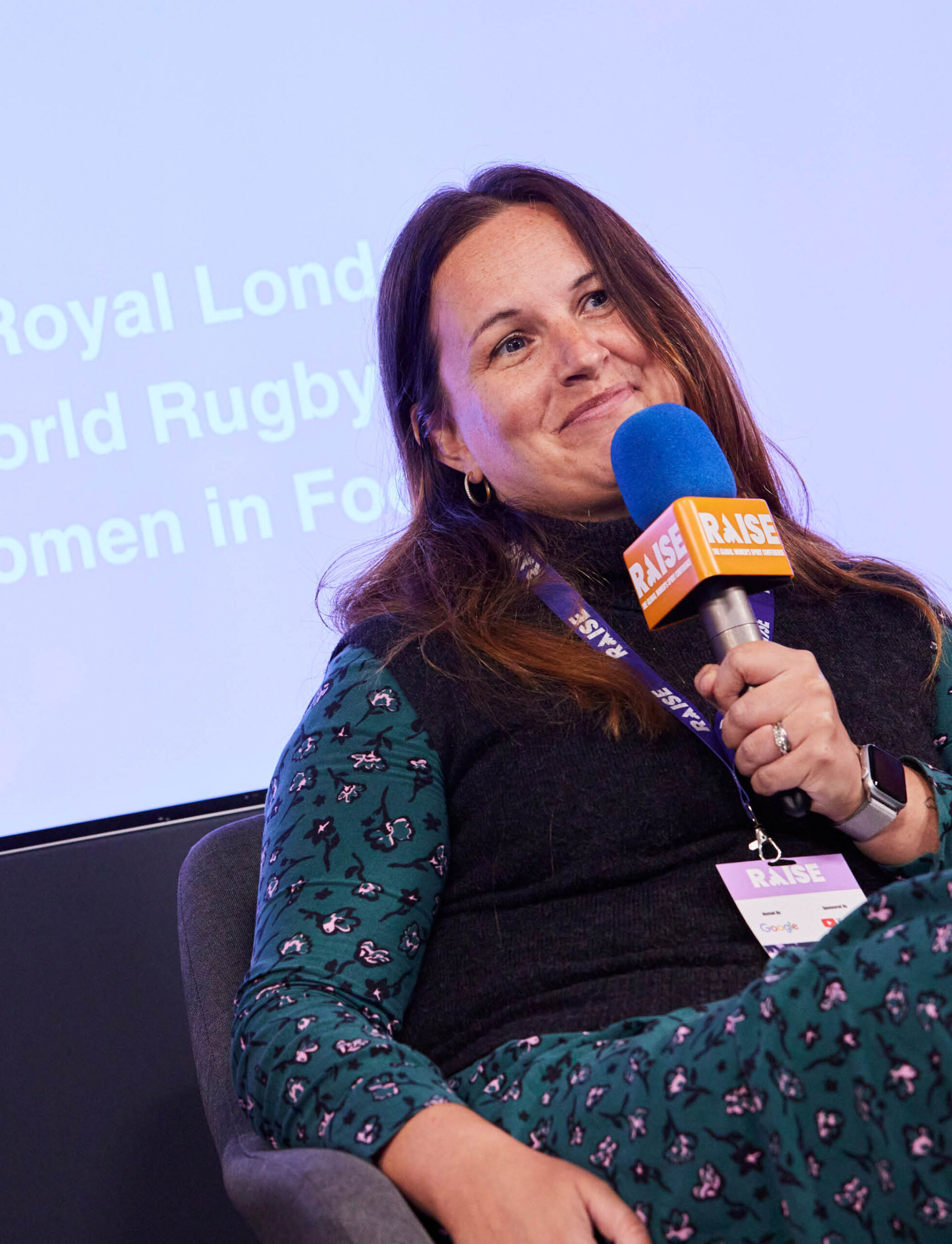
To bolster her argument, Demetra presents some impressive numbers. Forty percent of the F1 audience is female, and with few female-led brands on the grid, Charlotte Tilbury has a prime opportunity to reach this audience. Many potential customers likely know about the brand but may not have tried the products or fully understood its story. Visible moments such as press conferences, events, pop-ups, and product stations at F1 races, along with social media content featuring drivers before and after races, can highlight what these female drivers are striving to achieve. This exposure puts customers in front of the products, allowing them to experience what the brand is all about and significantly raising awareness.
Meeting the needs of women—whether athletes or fans—is not only in the commercial interest of a business but also crucial for inspiring the next generation. Charlotte Samuelson, COO of World Rugby, takes to the stage to shed light on the realities we face and the work that remains. Having transitioned from a successful career in finance to her role in rugby, Charlotte’s passion for sports led her to seek a position on the board of a county cricket club, where she encountered a candidate pool dominated by affluent white men who often engaged in philanthropic efforts. Despite her qualifications, she was told she would never be elected by the members. This led to her being co-opted onto the board. “The challenge for us is to engage with such organisations (and this issue isn’t limited to clubs; it spans all sectors of life) and highlight that this demographic will continue to dominate the game. If you want lasting change, more must be done,” she shares.
Much of our conversation has revolved around brands, investment, and leadership—everything at the top of the game. But what’s the reality at the grassroots level—in parks, schools, and family homes? The stark truth is that 84% of adolescent girls don’t get enough physical activity globally, with girls dropping out of sport at double the rate of boys. Why? Because of the persistent narratives propagated by traditionalists. Nikki Doucet, CEO of Barclays Super League has experienced this firsthand. As a Canadian, she explains that she grew up in a system that comprehensively supported women’s sport, whereas in the UK, the prevailing narrative suggests that girls serve a lesser purpose on the sports field. Tanya Martin, Head of Insight & Innovation at the non-profit organisation Women in Sport, elaborates, sharing that she’s heard stories of boys practising on the main pitch while girls were relegated to the practice pitch, subtly conveying that the boys’ team is more serious or matters more. “All this sends the message to girls that they don’t belong. Then, when they lose interest in sport, we interpret that as disinterest, missing those subtle, demotivating signals. We need to address these messages as a society, as well as within sport, to enhance girls’ sense of belonging.”

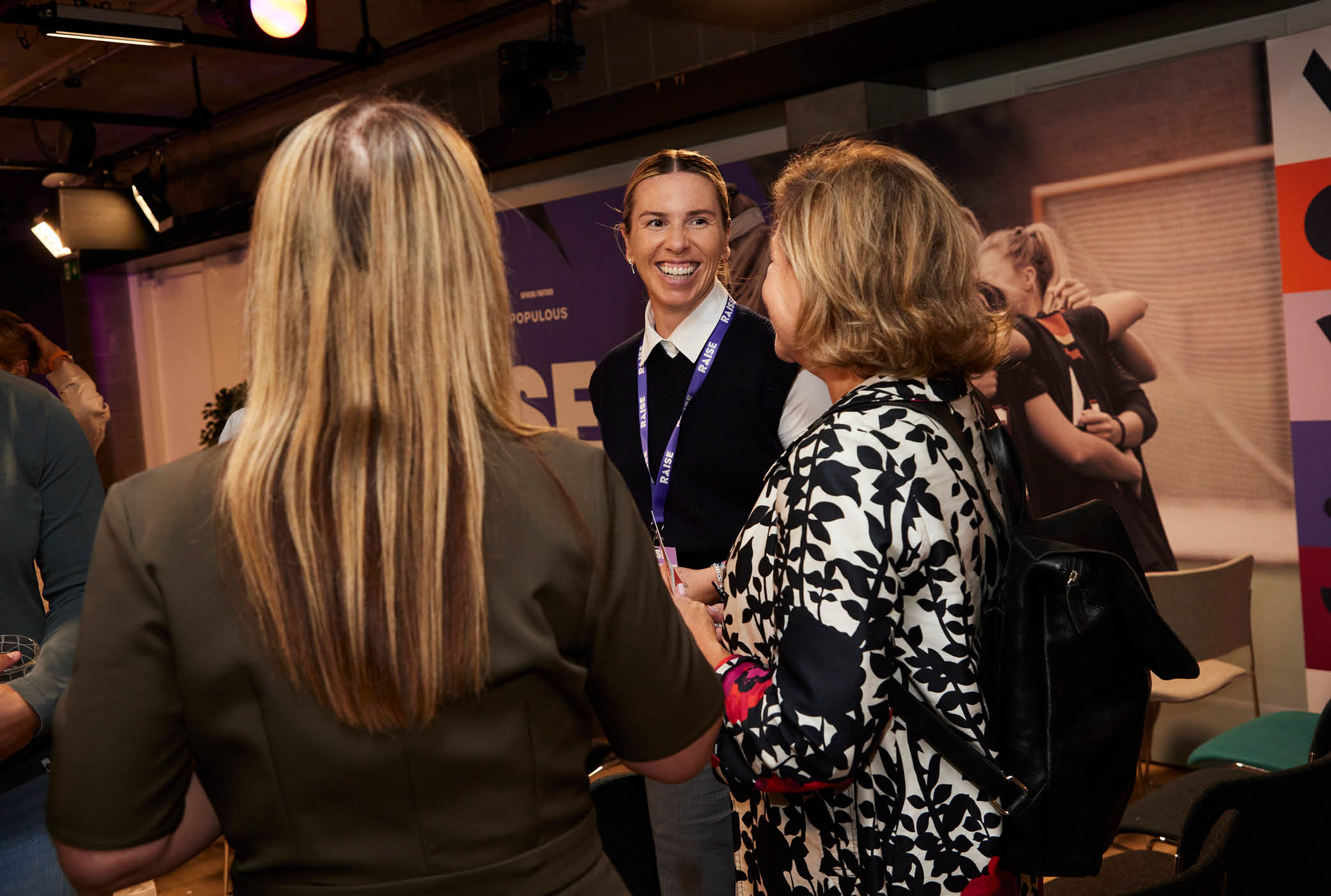
fundamental
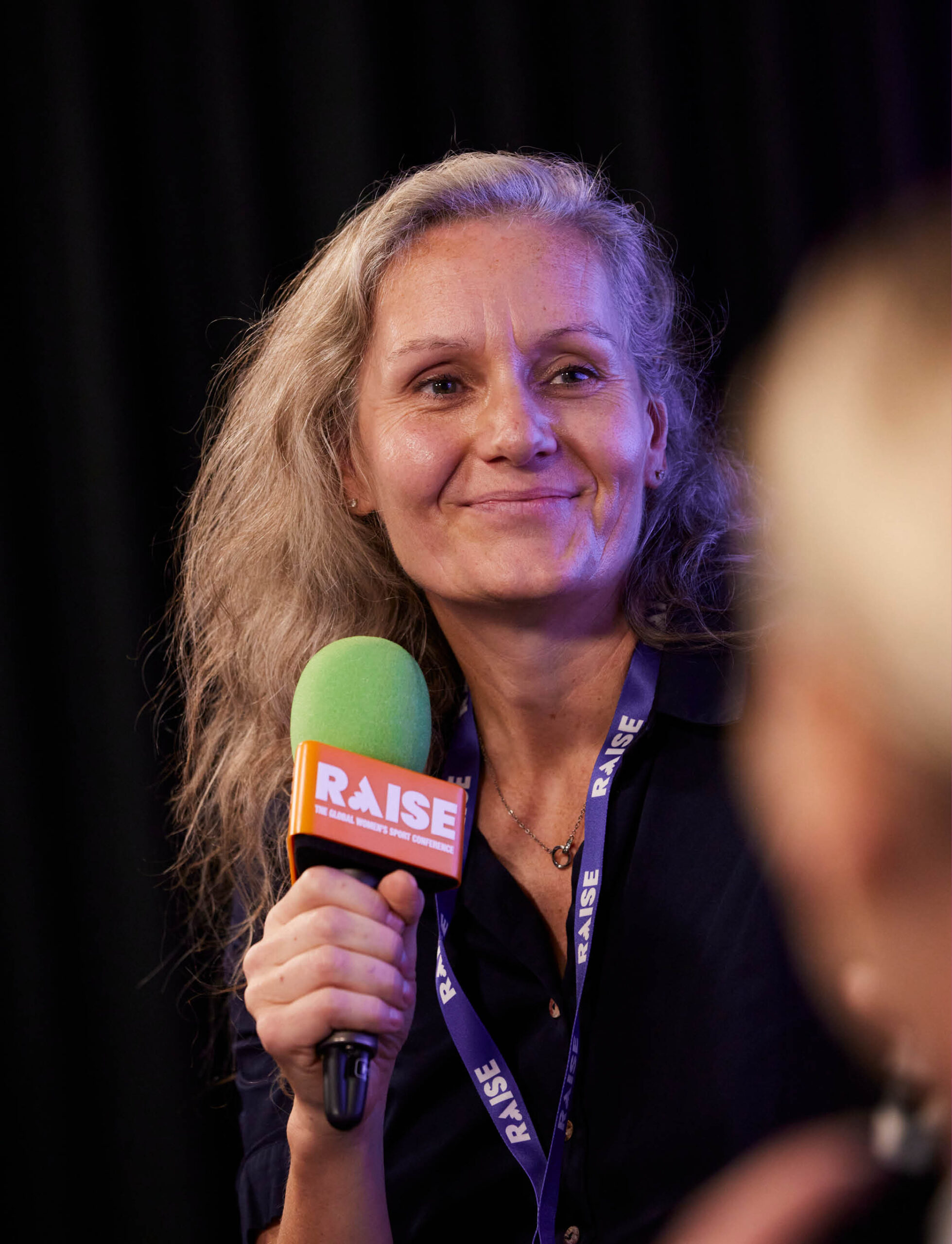
There’s also the issue of access – take football as an example. The Lionesses have significantly raised the profile of women in football; however, young girls still struggle to access football at school. It often isn’t part of the curriculum in many schools, and for those that do, the necessary facilities may not exist. In the words of former Chelsea player and now Commercial Manager for Chelsea, Carly Telford, “We don’t just want to enjoy the strawberries and cream; we want to grow the grass.” We can’t simply jump on the bandwagon and celebrate the Lionesses’ success while young girls lack access to sport in schools. We need the right facilities, infrastructure, and a fundamental belief that women can excel in football to sustain the progress of women’s sport. It can’t rely on one enthusiastic PE teacher! “If you could have a magic wand that granted you anything apart from money, what would it be?” asks Olympic champion and keynote speaker Catherine Bishop to the panel. A resounding response follows: “Education and entrepreneurial spirit!”
My biggest takeaway from all the conversations over these two days is that while substantial progress has been made in recent years, we can’t simply sit back and expect further advancements to materialise. We can invest all the money in the world into women’s sport, but female voices are integral to its development. Ensuring these voices are heard is one of the biggest challenges we still face. To do this, we need to educate our male counterparts, helping them see things from a female perspective to identify blind spots where needs are unmet in the women’s game and recognise where sustainable pathways are needed to grow the product. Moreover, we must be bold and not always play it safe, nor should we conform to how things have been done in men’s sport. Where there’s a rule that makes no sense, advocate for change. Where there’s an unmet need for women, voice it. This is where the real magic will happen for the women’s game. After the women I’ve met over the last two days, I feel optimistic about achieving true, long-lasting progress for women in sport.
What’s the future of women’s boxing in Saudi Arabia? What new investment funds are emerging? How can we unlock the power and true potential of women’s football? Stay tuned for more Glorious pieces featuring insights we learnt from RAISE in the coming weeks!
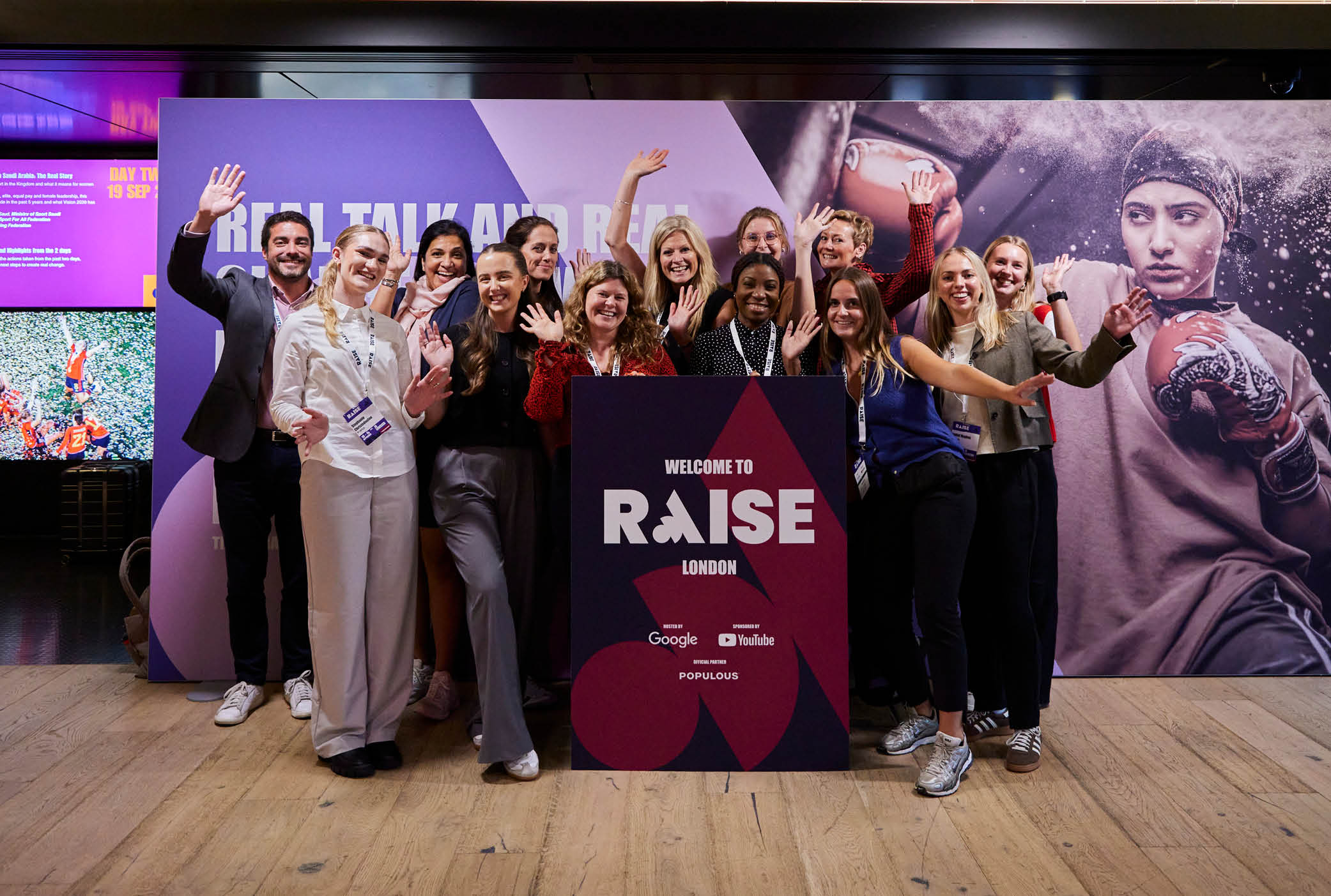
Find out more about RAISE Women’s Sport Conference founder Sally Corander HERE
